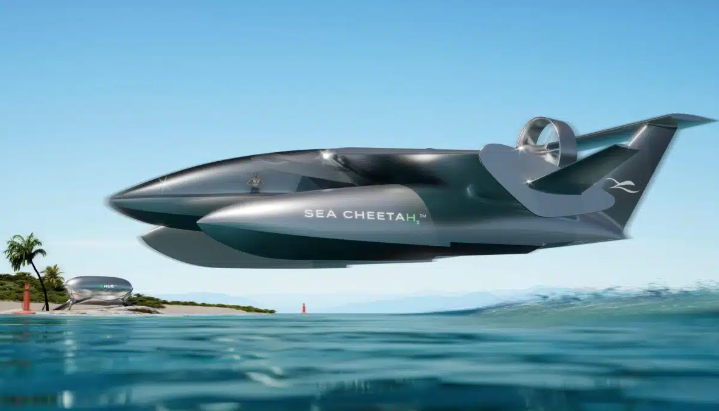The Sea Cheetah, an amazing hydrogen-powered vessel, is set to radically transform maritime transport.
The Sea Cheetah is not just a vessel; it’s a technological revolution. By harnessing the ground effect, it promises fast, carbon-free journeys. This innovative concept, driven by an audacious startup, could redefine how we view maritime transport. But what exactly lies behind this ambitious project, and what challenges must it overcome to succeed?
The Promise of Carbon-Free Transport
The Sea Cheetah stands out with its propulsion system. Powered by hydrogen, it ensures carbon-free journeys, a major asset in the fight against climate change.
Local hydrogen production on platforms called H2Hubs guarantees energy autonomy, making this vessel even more appealing for the maritime sector.
A Technology Based on Ground Effect
At the heart of this innovation lies the ground effect, which enhances lift by flying at low altitude above the water. This technology reduces energy consumption while increasing range.
In the United States, the Sea Cheetah avoids classification as an aircraft, simplifying its certification process and accelerating its market launch.
High Speed Poses Safety Challenges
Its high speed presents safety issues. Integrating this vessel into existing maritime traffic will require advanced systems to avoid collisions.
🚀 Innovation
The Sea Cheetah offers fast, zero-emission maritime transport.
🌊 Stability
Swells and waves threaten stability at low altitude.
Fierce Market Competition
The Sea Cheetah isn’t alone in this market. The Viceroy Seaglider already offers functional prototypes, fueling intense competition.
Each player hopes to become the leader in zero-emission transport, a rapidly growing and crucial sector for the future.
The Sea Cheetah embodies an audacious vision of maritime transport. However, successfully integrating this technology into a complex environment requires innovative solutions. Will this flying vessel manage to navigate the turbulent waters of the global market?
Source : innovant




